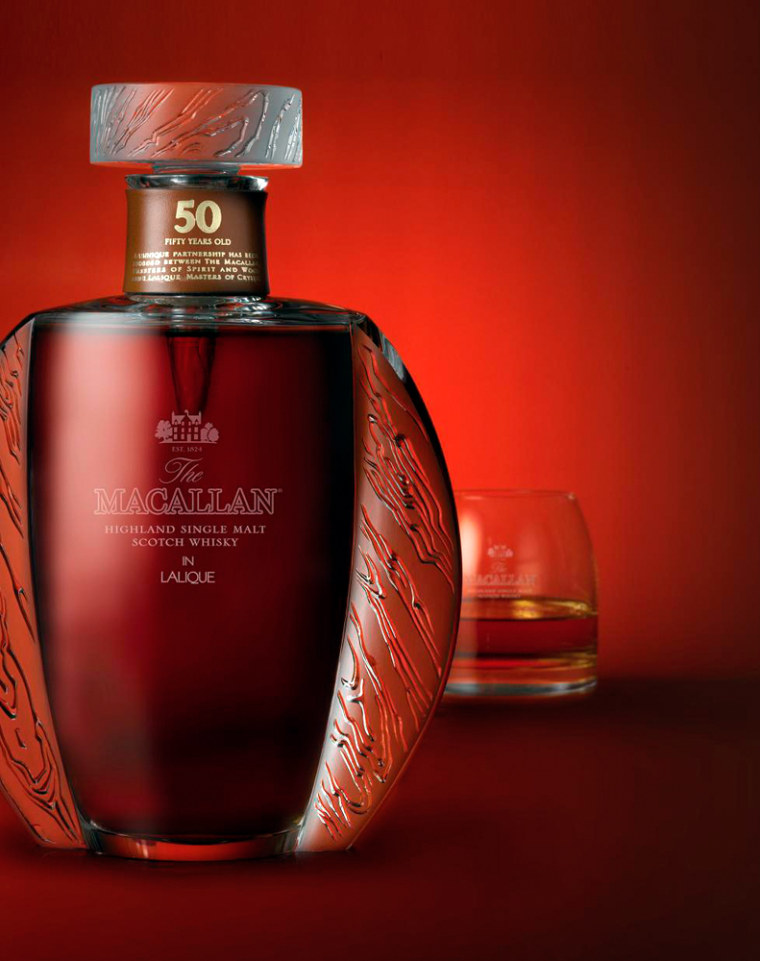Ten years ago — even five — if you walked into a bar with any sort of pretensions of being hip you would likely spy, prominently displayed on the back bar, half a dozen bottles of single malt scotch.
These days you are just as likely to see half a dozen bottles from the same distillery.
There are special editions and limited editions, double-vatted malts and single vintage malts and single cask malts, and it's all enough to make your head spin even before you've begun to sample the stuff. What the highlands is going on here?
For one thing, producers have woken up to the fact that there is demand for all these old whiskies that had been languishing in their cellars for years. They also realized that, if approached with sufficient savvy, the market that would pay top dollar for interesting whiskies.
Just as enthusiasts discovered the pleasures of single malts a decade or so ago, they are now looking for more specialized and refined products.
"People's tastes have got more sophisticated," says Mark Izatt, senior brand manager of scotch whisky for Moet Hennessy USA. "The established distilleries, the Glenmorangies and Macallans of the world, have discovered that they are sitting on these rich archives of stock that are getting older and older, and they are finding newer ways of bringing it to the marketplace."
It is part of what I call the "gourmetization" of American taste (think $30 extra-virgin olive oil and $5 loaves of artisanal bread). As Frank Coleman, vice president of the Distilled Spirits Council of America, explains, "It reflects a larger trend across the whole consumer categories, especially in food and beverage products. When it comes to distilled spirits, the most massive growth is occurring at the super premium end, and the scotch producers were there first in terms of these limited edition bottlings and wood finishings and so forth."
And it is a rapidly growing market, at a time when the sales of brown spirits in general are stagnant. According to Ian Millar, chief brand ambassador for Balvenie and Glenfiddich, 20 years ago single malts represented 1 percent of Scotch sales. Now, they are 9 percent. And that's by volume; in terms of dollar value the figure is even higher.
A few words of explanation: A single malt scotch is the product of one single distillery, just as Château Lafite wine comes only from that château. In the past most production was used in blended scotch — Johnny Walker, Chivas Regal, etc. — but these days more and more of it is being bottled single.
But even a single malt is, in fact, a blend. A distillery's cellar will contain thousands of casks of maturing whisky, each one subtly different. The casks are different sizes and different ages. Some have previously held bourbon, some port and some sherry. And they have been stored under different conditions. So no two are exactly alike, and it's the master blender's job to take these endlessly varying ingredients and make a consistent product — the Talisker 10 Year Old, for example.
Increasingly, producers have been experimenting with various special edition bottlings. These might be a single vintage bottling — a blend of whiskies from just one year — or even a single cask version. Then there's the increasingly popular practice of double vatting. This involves taking a cask of unremarkable whisky and finishing it in a second cask that previously held sherry, or rum or a famous wine, in order to add an extra layer of flavor. These bottlings often differ considerably in flavor from the main iteration — and that's the whole point of the exercise.
"Not only are there distilleries that five years ago might have had three different bottlings and now have half a dozen, but some of the more exotic, limited editions change from year to year," observes Jonathan Goldstein of New York City's Park Avenue Liquors. "This is a doubly virtuous approach."
By that he means the PR value that accrues to the brands from these special bottlings. A lot of the motivation for producers to bottle and sell prestige editions is not for the immediate profit from those 720-odd bottles (a tiny volume that will represent less than the rounding error in the accounts) but because it validates the brand and enhances its image. It also creates a buzz in the media, as well as amongst the retailers and bartenders, who in turn influence the consumer who might not be able to afford the $2,000, 30-year-old, limited edition whisky, but is prepared to shell out $40 for the regular 14-year-old version, especially for a special occasion or for a gift.
Speaking of holidays and gifts, in the accompanying slide show I have assembled a selection of 13 superb drams at a wide variety of price points, from all the different regions of Scotland and reflecting the whole panoply of complex and beguiling flavors this most captivating of spirits is capable of.
